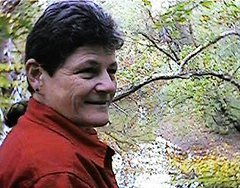Focus
If you are manually focusing an object close to you, get the sharpest image you can by adjusting the focus, then rock back and forward observing the image. When it is at it’s sharpest, press the shutter.
Automatic focus is getting to be the standard on modern cameras but there may be times when you need to do manual focus so read your manual to learn how to override the auto focus. Some cameras have focus lock, or single/continuous focus settings. If you want one object focused but not dead center, you may need to learn how to do single focus, keep your shutter button partly depressed as you move the frame to where you want it and then snap the picture. (this happens more often than you would imagine if you apply the rule of thirds for good composition.)
Discussion of focus always involves some discussion of depth of field. The depth of field is the area in front of and behind your main subject that is in reasonably good focus. Control of the depth of field is important for composition as well as focus.
If you are taking a picture of an athlete for instance, and the crowd behind them would be somewhat distracting to your picture, you can have the crowd be slightly out of focus while your subject is clearly finely focused. So how do you control your depth of field and what limits are there?
One way to control the depth of field is through the aperture setting. The smaller the aperture (the higher the f number) the greater the depth of field. The larger the aperture (the lower the f number) the shallower the depth of field.
Another way to affect the depth of field is through what you focus on. The farther away your focused object, the greater the depth of field. So a row of poles or fence posts you might want to focus about two thirds of the way back so that most of the poles will be in focus. If that is clear as mud, then think of it this way. Say you have 5 poles, focus on the one that is 3rd or 4th farthest from you as more is in focus in front of your focal object than behind it.
The lens you choose also factors in. Generally speaking, you will not want to use a very long lens for a landscape shot since the depth of field will be shallower in a longer lens.
Shutter speed and motion also can play a role in what is focused and how well focused it is. If your subject is in motion, the faster the shutter speed the sharper the image. You can freeze motion with a fast enough shutter speed. Is this the effect you want? Maybe. Sometimes you want to show motion by having the subject slightly out of focus. Or you might bring attention to your subject by having the background slightly out of focus. It is one of the ways you can simplify to bring attention to your subject.


1 Comments:
Hi; yes, I have a copy of "Brond", taped from its original (and I think only) broadcast on Channel 4 back in Eighty-oh-my-gawd-is-that-the-time-already?
My brother will hopefully soon have the technology to transfer stuff from VHS video on to shiny DVD disk - and I'll be ordering a few copies. I'd be happy to send you one; keep in touch - I'll let you know if it's possible.
Paul.
Post a Comment
<< Home